#First Peoples
Explore tagged Tumblr posts
Text
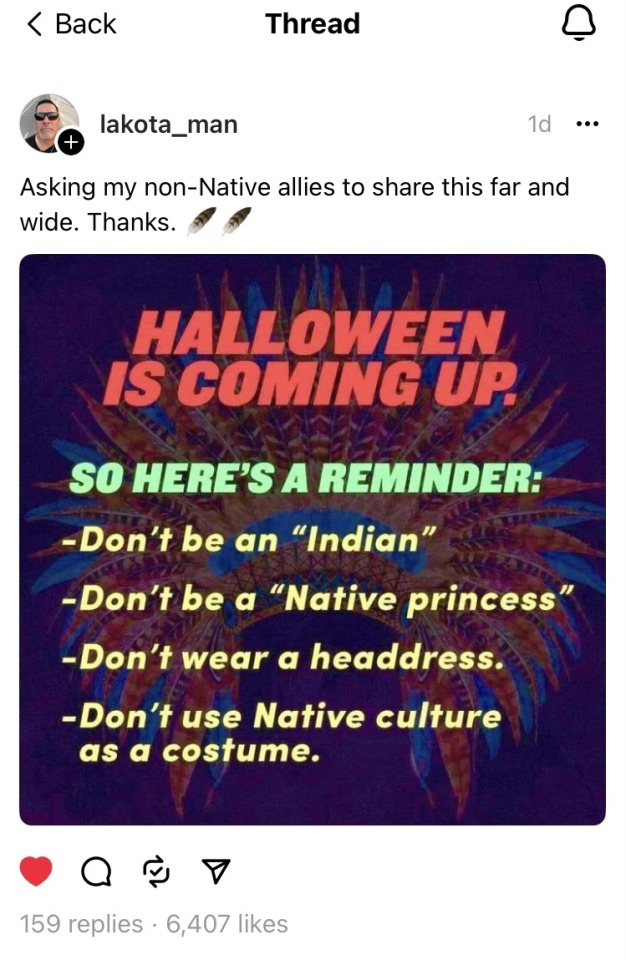
#threads#threads app#threads account#threads an instagram app#leftism#leftist#left wing#indigenous#indigenous rights#indigenous people#halloween#happy halloweeeeeeen#costume#halloween season#halloween costumes#halloween stuff#first peoples#native american#socialist#socialism
406 notes
·
View notes
Text

Leather jacket decorated with glass beads. Great Plains, Lakota peoples, 19th century
Museum. This jacket features beaded pictographic motifs that likely detail biographical and historical narratives. For centuries, Plains Indian artist painted buffalo hides with family and community histories. The United States’ buffalo eradication program forced artists to adapt their paintings to paper, canvas, and muslin in what came to be known as ledger art. A female artist beaded this buckskin jacket with pictographic motifs, reinterpreting the art form back onto leather.
#reddit#artefactporn#munakatasennin#leather jacket#glass beads#great plains#lakota#19th century#pictographic motifs#plains indian#indian#first peoples#first nations#indigineous people#american indian#native american#art#clothing#beaded#buckskin#jacket#leather#horse#rider#women artists
22 notes
·
View notes
Photo
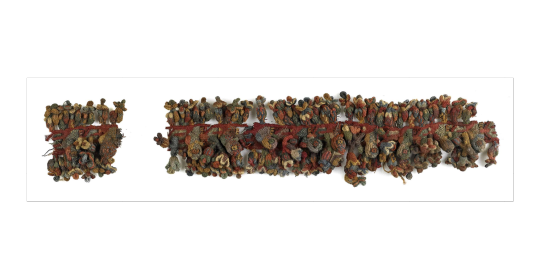
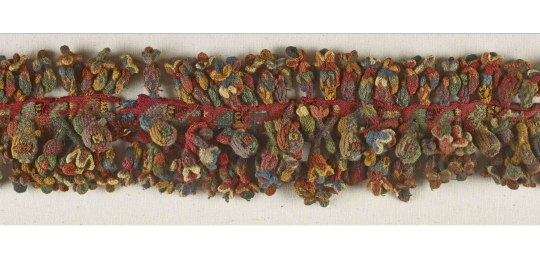

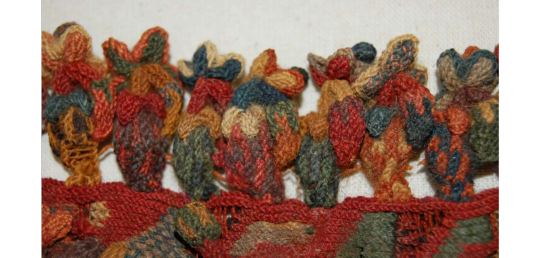
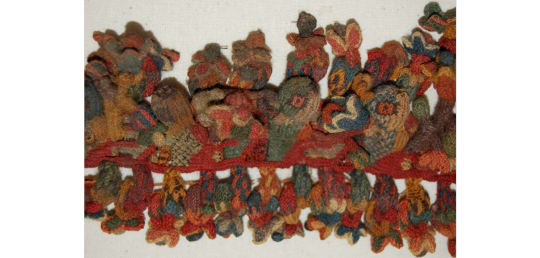
textile
Cultures/periods: Nasca
Production date: 100-400
Made in: Peru
Provenience unknown, possibly looted
Funerary mantle fragments; cross knit loop stitch; camelid fibre; row of knitted birds alternating with flower motifs along the centre with flower motifs along each edge; mutli-coloured: reds, greens, blues, browns.
British Museum
201 notes
·
View notes
Photo



(via The Prehistoric Ages: How Humans Lived Before Written Records)
#The Prehistoric Ages#How Humans Lived Before Written Records#Ancient Ways#First Peoples#Wild Frontiers#paleoanthropology
14 notes
·
View notes
Text
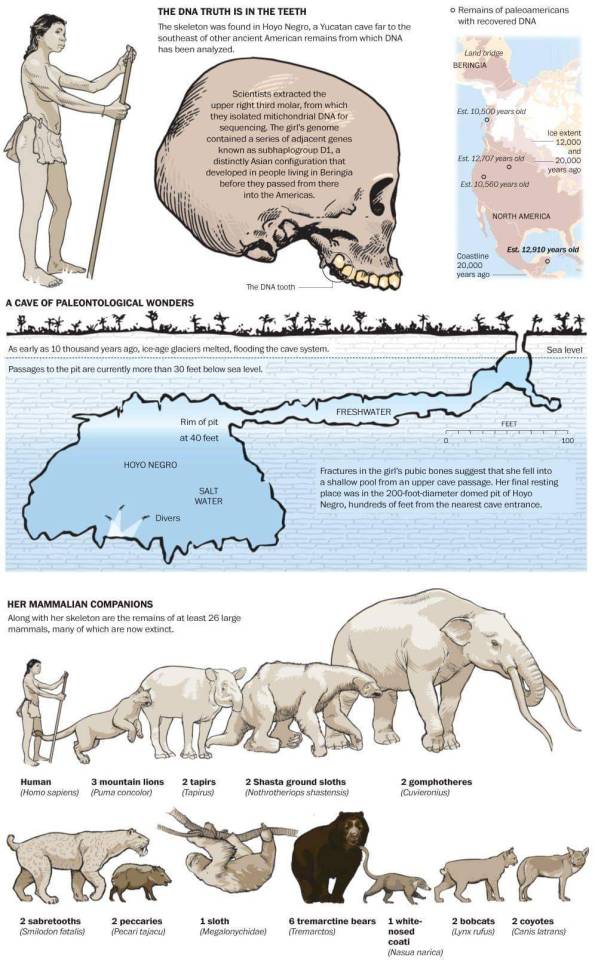
This post is about a Paleoamerican skeleton found in the Yucatan.
"In pre-Mayan Mexico, a slender, bucktoothed 15- or 16-year-old girl fell into a flooded, underground cavern about 12,000 years ago. She was a Paleoamerican, with features more akin to Africans and Southeast Asians than modern Native Americans. DNA collected from one of her molars reveals a direct connection to the people who crossed the Bering land bridge from Siberia more than 18,000 years ago. The discovery greatly extends the range of DNA information about Paleoamericans." Credit: The Washington Post.
12 notes
·
View notes
Text
youtube
this PBS video popped on yt about Cahokia :)
4 notes
·
View notes
Text

4 notes
·
View notes
Text
A ritual I hope to have complete by Thanksgiving/Indigenous People's Day
I made this with North American indigenous people in mind, but this is for anyone who opposes the destruction of indigenous people, their cultures, and their land.
I added angels from the Abrahamic tradition as two major oppressive organized religions stem from that - Christianity and Islam. I think we can add Israeli Judaism to that list, plus extremists of each religion. The angels aren't oppressive, but beliefs in them have been hijacked to form power structures, so those angels can also cut to the heart of the same power structures.
In research for this, White Buffalo Calf Woman stood out as one of the strongest North American native deities for this. I think she can open the way for transfer of power from perverse back to righteous - from colonizer to colonized, devourer to steward.
Gaia is the embodiment of all earth in ancient Greece. She's also well known amongst Europeans and colonizers, so her power can reach into our (colonizer) minds and open pathways as well.
I intentionally keep my blog quiet, but if you see this ritual and like it, please make it your own and perform it on Indigenous Peoples Day.
Ritual for Returning Respect and Agency to Indigenous Peoples
Purpose: To honor the Indigenous peoples of North America, restoring their respect, agency, and leadership. This ritual seeks to invite their wisdom and reverence for the Earth into the ethos of society, empowering them to guide cultural healing and transformation.
Steps for the Ritual
Materials Needed:
A feather (symbol of wisdom and freedom)
A small stone or crystal (symbol of Earth and ancestral grounding)
A white candle (for divine protection and justice)
A blue candle (for truth and communication)
Sage or cedar for smudging (cleansing and protecting their rightful heritage)
A bowl of water (representing emotional and collective healing)
Preparing the Space Begin by lighting the white and blue candles, symbols of divine justice and truth, casting their glow into the sacred space. Smudge the area with sage or cedar, letting the smoke rise as a blessing to purify and protect. Arrange the feather, stone, and bowl of water on your altar, representing wisdom, grounding, and the healing essence of nature.
Raising the Circle Stand at the center of your space, holding the feather and stone. Slowly turn clockwise four times. With each turn, envision a radiant circle of light forming around you as you say:
“I call forth a sacred space, A place of justice, truth, and grace. Within this circle, wisdom shall reign, Healing the world of its deepest pain.”
Let the circle shimmer with energy, a haven for respect, empowerment, and transformation.
Calling the Deities and Angels Invoke each sacred presence with reverence, inviting them to guide this work.
Archangel Michael: “Michael, guardian of justice’s flame, Stand with those history sought to defame. Shield their path, restore their might, Defend their honor, day and night.”
Archangel Uriel: “Uriel, angel of insight’s fire, Illuminate truths that inspire. Reveal the wisdom of nature and land, Guiding the world with your steady hand.”
White Buffalo Calf Woman: “Sacred Woman, bringer of peace, Let unity grow, let division cease. Guide us to honor the Earth’s design, Rooting respect in all humankind.”
Gaia, Earth Mother: “Gaia, nurturer, spirit of land, Your strength sustains, your wisdom commands. Teach us the reverence Indigenous know, To live in harmony, where life can grow.”
Feel their presence enter the circle, their energies intertwining with the light of your intent.
Focusing Your Intent Hold the feather in one hand and the stone in the other. Close your eyes and envision Indigenous peoples standing tall, respected and empowered, their voices shaping policies and cultural values. See their traditions and connection to the Earth becoming integral to society’s ethos.
Imagine a world where people honor the sacred balance of nature, where the wisdom of Indigenous leaders inspires compassion, sustainability, and unity.
Releasing the Energy and Opening the Circle Place the feather and stone back on the altar. Dip your fingers into the bowl of water and flick it outward, saying:
“This healing flows to the Earth and sky, Lifting the voices of those denied. Respect and wisdom spread their wings, Restoring balance to all things.”
Stand at the center of the circle. Turn counterclockwise as you say:
“This circle opens, its light takes flight, Blessing the world with truth and right. What we have nurtured now expands, Flowing to all, through hearts and hands.”
Visualize the energy of the circle sinking into the Earth and radiating outward, carrying the spirit of empowerment, respect, and reverence for nature into the world.
Releasing the Deities and Angels Offer your gratitude and release each presence with words of respect:
Archangel Michael: “Michael, your strength has stood so true, We thank and honor the work you do. Go now with grace, your duty complete, Until we call, your power we greet.”
Archangel Uriel: “Uriel, wisdom’s guiding star, You’ve shown the truths of who we are. Return with thanks to your radiant light, Blessing us still in the quiet of night.”
White Buffalo Calf Woman: “Sacred Woman, your peace we hold, Your lessons guide as they unfold. Return to spirit, your mission fulfilled, With gratitude deep and love instilled.”
Gaia, Earth Mother: “Gaia, nurturer, teacher, and friend, Your care and wisdom never end. With thanks, we honor your sacred way, May your blessings guide us every day.”
Feel their energies gently withdraw, leaving behind their influence to sustain the work.
Closing the Ritual Reflect on your connection to this purpose. Extinguish the candles, holding in your heart a renewed commitment to honoring Indigenous peoples and their wisdom. Pour the water into the Earth to join our precipitation system and spread ritual energy far and wide. Carry their respect for the Earth into your daily life, letting it guide your actions and inspire those around you.
#indian#native american#indigenous#wicca#witchcraft#heal#earth#environment#magick#justice#first peoples
2 notes
·
View notes
Text
From @ttnewsday on Instagram:
"The Santa Rosa First Peoples community remember their ancestors at the Red House on October 16. Chief Richardo Bharath Hernandez spoke on the significance of the event.”
#trinidad and tobago#caribbean#west indies#west indian#trinbagonian#trinidad#trinidadian#culture#indigenous trinidadian#indigenous caribbean#indigenous culture#first nations#first peoples#caribbean culture
4 notes
·
View notes
Text

#Natinal Ribbon Skirt Day#Indigenous Heritage#Indigenous Culture#First Nations#First Peoples#Mary Simon#Her Excellency The Right Honourable Mary Simon#Governor General Mary Simon#Governor-General Mary Simon#Governor General Simon#Governor-General Simon#Vicereine#Vicereine of Canada#I love this woman#Canadian Instagram#Canada Chronicles
2 notes
·
View notes
Text
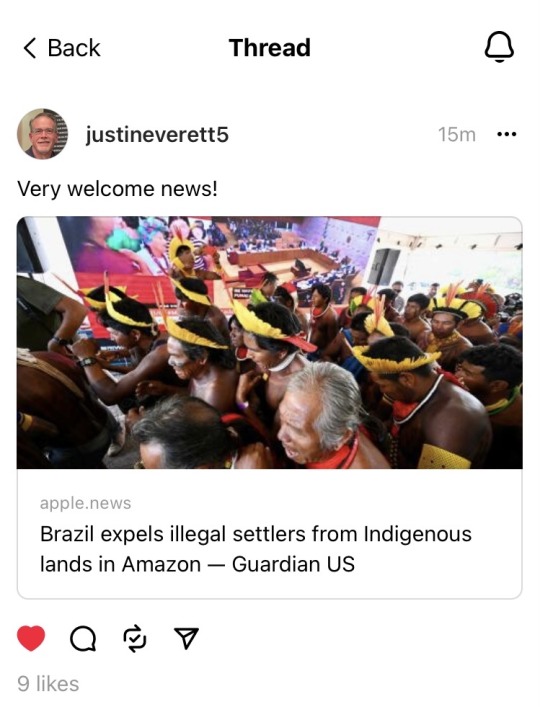
#threads#threads app#threads account#threads an instagram app#threads post#good news#great news#decolonialism#decolonisation#decolonize#decolonization#brazil#indigenous#indigenous rights#native rights#first peoples#leftist#leftisim#leftism#news#international news#amazon#climate news#good climate news#environmental news#first nations
50 notes
·
View notes
Text
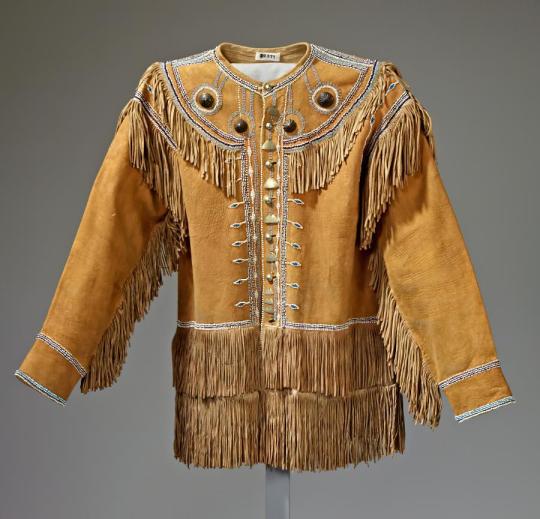
Leather jacket Arizona, United States, Western Apache culture, 19th century
#reddit#artefactporn#munakatasennin#leather#jacket#arizona#united states#19th century#western apache#fringe#clothing#american indian#native american#indigenous#indigineous people#first peoples#first nations#indian
16 notes
·
View notes
Text

From the amazing island empire of Waori'lu'kalai, one of the Great Powers in my City of Wizards book series! The Island of Waori is home to the capital and is roughly the size of Australia, with many similarities to the real world continent - including the amount of deadly land flora, fauna and landmarks.
Waori'lu'kalai has approximately two hundred smaller islands united under what was originally a federation of sea-faring tribes. One of the most famous locales is the Island of Wah'hi, which has a staggeringly large population of dwarves. An ancient settlement, Pahak'hi, was actually built into the local volcanic mountains by the locals who have flourished over time, and were one of the founding cultural members of the original Waori federation. The Pahak'hi people are legendarily daring warriors and skilled craftsmen, and honor their history and traditions very strictly - examplified by the Pahak'hi smith featured above!
#artists on tumblr#creative writing#fantasy art#writers on tumblr#fantasy writer#dwarf#dwarves#oc art#oc#polynesian#hawaiʻi#maori#first peoples
3 notes
·
View notes
Photo
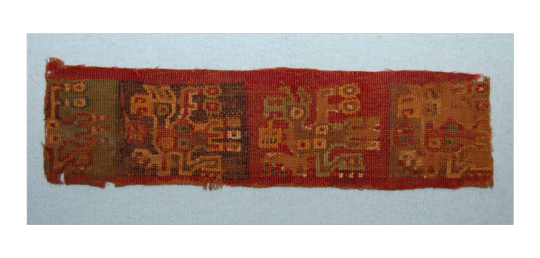
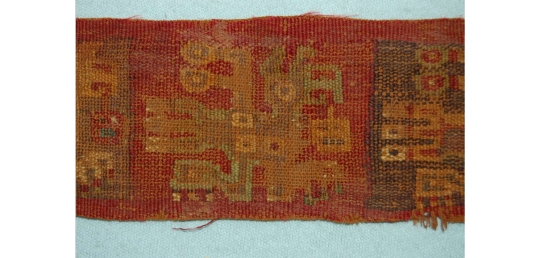

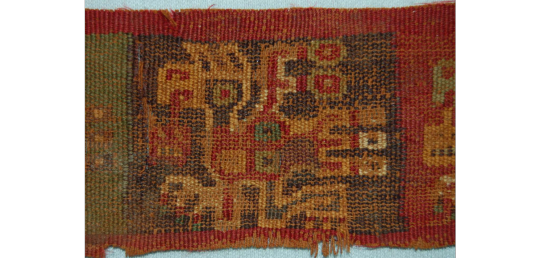
textile
Cultures/periods: Tiahuanaco (?)
Production date: 600-900
Made in: Peru
Provenience unknown, possibly looted
Textile fragment; cotton warps with camelid fibre wefts; tapestry (?); segemented design; row of bird (or llama?) figures on coloured rectangular backgrounds, each dangling a trophy head from the mouth; red, green, indigo, browns and white.
British Museum
64 notes
·
View notes
Text
So...
Middle Earth has potatoes and pipeweed. There are mounds where the dead were buried. And according to Tolkien, they didn't actually speak any known European languages, so he had to translate it all.
I think I know where the Shire is.

#literature#lord of the rings#first peoples#humor#this is meant in jest#i am not calling any of the pueblo peoples hobbits
3 notes
·
View notes